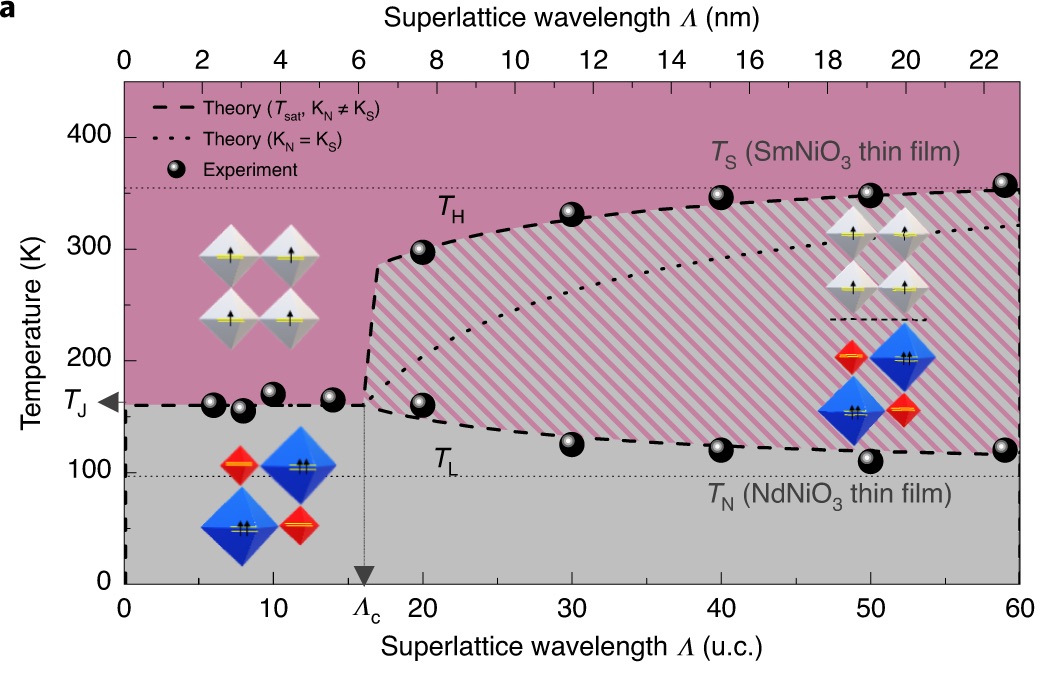Length scales of interfacial coupling between metal and insulator phases in oxides

Controlling phase transitions in transition metal oxides remains a central feature of both technological and fundamental scientific relevance. A well-known example is the metal–insulator transition, which has been shown to be highly controllable. However, the length scale over which these phases can be established is not yet well understood. To gain insight into this issue, we atomically engineered an artificially phase-separated system through fabricating epitaxial superlattices that consist of SmNiO3 and NdNiO3, two materials that undergo a metal-to-insulator transition at different temperatures. We demonstrate that the length scale of the interfacial coupling between metal and insulator phases is determined by balancing the energy cost of the boundary between a metal and an insulator and the bulk phase energies. Notably, we show that the length scale of this effect exceeds that of the physical coupling of structural motifs, which introduces a new framework for interface-engineering properties at temperatures against the bulk energetics.
Claribel Domínguez, Alexandru B. Georgescu, Bernat Mundet, Yajun Zhang, Jennifer Fowlie, Alain Mercy, Adrien Waelchli, Sara Catalano, Duncan T. L. Alexander, Philippe Ghosez, Antoine Georges, Andrew J. Millis, Marta Gibert & Jean-Marc Triscone
Nature Materials volume 19, pages 1182–1187 (2020)